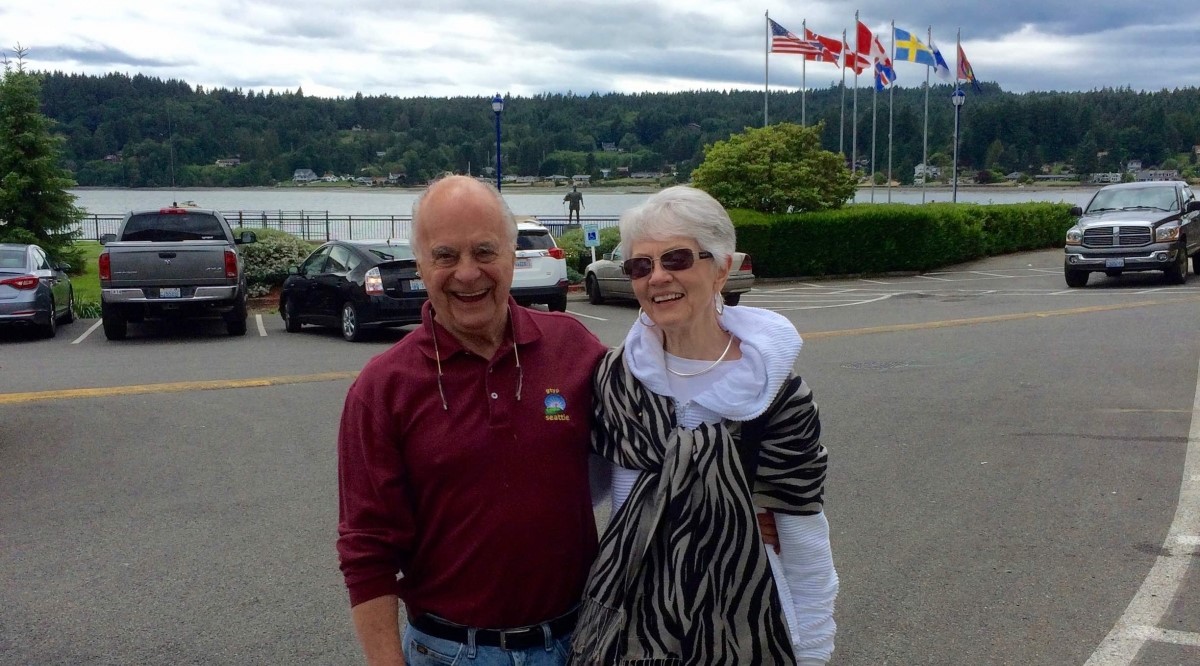The following story is part of a joint project between myLifeSite and Senior Correspondent where we ask people to report on their senior living decision process.
By Jim Patrick
After retiring, my wife and I moved from our home in Seattle to Tucson, where we lived in an active senior retirement community and lived for fifteen years. About six years ago, while in our early-mid 70s, we began to discuss and consider our options for where and how we would like to live when we reached our 80s and 90s.
We observed many neighbors stay in their homes too long and struggle with housekeeping and yard care, and we saw how some who could no longer drive were stranded without the help of someone driving them. We realized that we had no relatives who would be up to caring for us if necessary, and we do not have long-term care insurance.
Although we loved our two-story Tucson home, we felt that at some point we might require increasing levels of in-home care that would become rather expensive. The other concerns with in-home care were that we would become more isolated over time with little social contact. We also felt that housecleaning, cooking and maintenance would become burdensome and require outside help at even more cost.
We decided that a continuing care retirement community (CCRC) could possibly be the right answer for us. Over the next few years, we visited over twenty CCRCs, both in Tucson and the Seattle area, as most of our children and grandchildren live within easy driving distance of Seattle. We learned a great deal in those visits and researched many other CCRCs online.
Our online research also gave us good suggestions on what questions to ask on our visits. CCRCs have residential living in apartments and/or cottages, and also have assisted living and and higher levels of care available if such support becomes necessary. Among CCRCs there is a large variety in terms of cost and quality, and there are both for-profit and non-profit organizations that operate them.
We learned some things that became important in our decision process. CCRCs will only accept an application for a continuing care contract from people who are healthy enough to live in independent living, so we knew we would need to make a decision while we were still relatively healthy. We also learned that some CCRCs have a policy that they will still take care of you if you outlive your money in your later years.
On one of our several trips to Seattle, we visited Judson Park, a CCRC in Des Moines, Wash., a suburb a few miles south of Seattle. It turned out to be very nice and attractive, with great views of Puget Sound. We did a quick drop-in tour, and the next day came back for a formal visit and tour.
Judson Park is part of the nonprofit Human Good organization that has been in the business for over sixty years with a total of seventeen CCRCs in the Western part of the United States. Since we do not own long-term care insurance, one key for us was that Judson Park will continue to care for you if you outlive your money, even if you have moved into assisted living, memory care, or 24-hour care.
After several weeks of considering and discussing, we made the decision to apply and eventually move to Judson Park. After living here for a year and a half, it is a great relief not to worry about home maintenance and yard care, and we do not miss cleaning or cooking every day.
For us, life in a retirement community has been anything but boring. We are as busy as we want to be with fitness classes, continuing education lectures and trips, social interaction with our neighbors, and volunteer activities.
With the earliest baby boomers turning 71 in 2017, it is expected that the demand for CCRCs will grow, with less availability and increases in price. In fact, Judson Park currently has a growing wait list for prospective residents.
Whether anyone eventually decides on a CCRC, we both believe it is well worth checking them out. As mentioned, we starting looking into them five years before making a decision, and we are glad we did. We now feel the time was right when we made the move at age 78.
And our advice to anyone is, “Don’t wait too long.”
About the Writer
Jim Patrick is retired from thirty-four years with the Municipality of Metropolitan Seattle, which provides public transportation and water quality services to the Seattle Metropolitan area. Jim started as a bus driver, and despite only a high school education rose quickly through the ranks into a management position. He served as manager of marketing and public relations, manager of route and service planning, manager of employee and labor relations, director of transit operations, and finally as deputy executive director of metro, overseeing both the public transportation and water quality divisions. After retiring at age 55, Jim formed a consulting firm serving public transportation agencies along the West Coast and British Columbia. He now resides in Judson Park Senior Living Community in Des Moines, a suburb of Seattle, where he serves on the resident council and is active on several resident and volunteer committees.

FREE Detailed Profile Reports on CCRCs/Life Plan Communities
Search Communities






